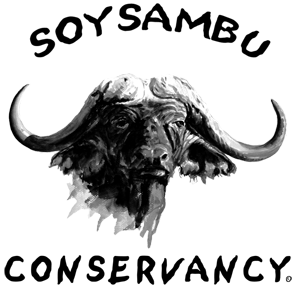Just as the sun was slipping behind the Mau Escarpment I received a call that an endangered baby Rothschild’s Giraffe was in distress. I jumped in my car and rushed there with blankets and phoned the Animal Rights Reserved mobile vet unit in Naivasha. They are about an hour or so away so all we could do was keep the baby warm and give comfort.
The sun was setting and there were hyenas close by so I asked our Soysambu Conservancy rangers for assistance. Mike, who has been on the giraffe monitoring team, arrived with the Conservancy vehicle. While we waited for the Vet Unit to arrive the baby become stronger. When the mom came around we moved away hoping the baby could get up with it’s mum’s encouragement. It was just too weak from many hours lying in that position. When the mom moved away we kept it warm and rubbed it’s body and legs, trying to get some circulation going. It finally lifted it’s head and sat up but still couldn’t stand and we couldn’t get it on it’s feet despite our best efforts.
The mobile vet unit arrived and immediately went to work getting the baby giraffe on it’s feet and examined it for injuries.
The Vet decided it was in good shape but had been lying there in the cold for so long it was numb so he massaged it’s limbs. It was amazing how quickly he responded.
The team then mixed a bottle of milk and glucose and after some coaxing he drank two bottles.
With that in him and feeling better he got up on his own and wobbled a bit but took a few steps. We decided to move as far away as possible and still observe with headlights dimmed to let it’s mom reunite with her baby. It was only a few minutes before she came up to him and touched his head and I guess, told him to follow her. She walked a few steps and he didn’t move, so she went back to him and maybe said “come on, there are hyenas about and you better come with me now”. (only my speculation) Well he followed her a few steps and stopped. She turned around and encouraged him again and he followed. Then he was looking for food so they stopped. She moved on and he didn’t follow so she came back, touched his head and he followed. This happened a few more times until they moved on. A little while later the baby sat down, I guess exhausted, and we were worried but he got back up again and followed her into the bush.
We think the mom was in the process of giving birth near the track from Kekopey to Elmenteita and she became spooked by a vehicle so took off running, the baby came out and hit the ground pretty hard. It is a tough birth in the best of circumstances. They usually get up and start feeding in about 45 minutes up to a couple hours. He had some scrapes on his legs and it was some time before he was discovered. The placenta was very close by so we assume this is the scenario.
A HUGE thanks to Animal Rights Reserved for their quick response which resulted in saving the life of an endangered species!!!
Kat Combes, CEO Soysambu Conservancy




















